In which we discover how mountains were formed, what happens when winter goes on for too long and that a mince pie has never been illegal, no matter how scandalous you make it sound.
This is the second of four seasonal story and festive food related episodes to take us through December and lead us to the big midwinter celebration of your choice, I hope you enjoy the slightly different focus. I will again let today’s story to speak for itself and allow it to weave its seasonal magic spell.
In which we discover how mountains were formed, what happens when winter goes on for too long and that a mince pie has never been illegal, no matter how scandalous you make it sound.
This is the second of four seasonal story and festive food related episodes to take us through December and lead us to the big midwinter celebration of your choice, I hope you enjoy the slightly different focus. I will again let today’s story to speak for itself and allow it to weave its seasonal magic spell.
The recipe for today is mincemeat as you might expect.
There were so many books and resources that I used to create this episode, you can find the list at Further Reading
I can only apologise for a slight dip in sound quality during a few seconds of the recording of the story part of the podcast in this week’s episode, I hope it doesn’t destroy your enjoyment.
If you have any questions about the episode or any of the resources I used please don’t hesitate to get in touch via Twitter or Instagram @FairytalesFood.
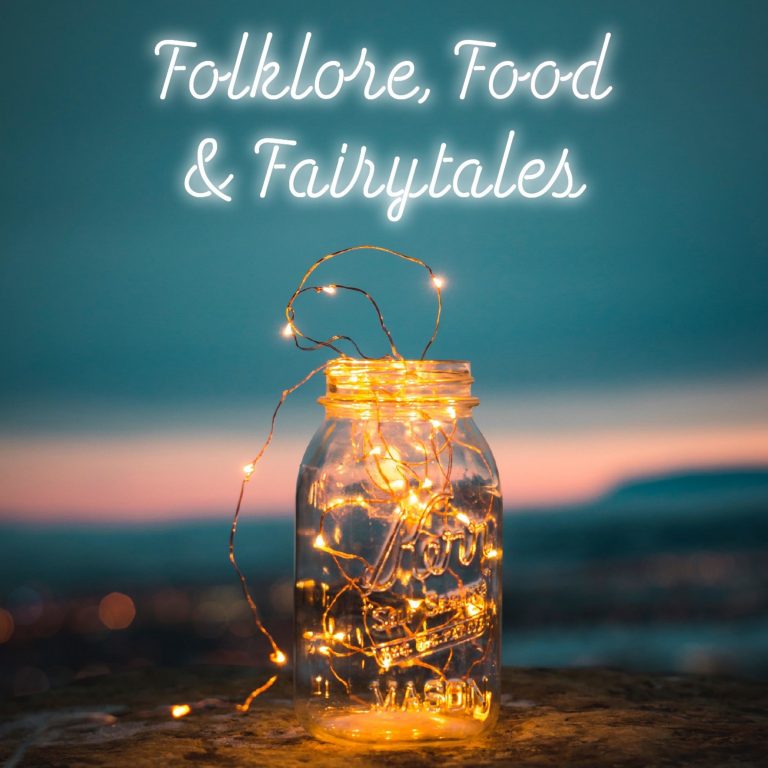
A Ubiquitous Festive Snack
We are going to leave the frozen mountains of Scotland and some of the cruelties of winter and warm ourselves with a lovely seasonal treat – a warm homemade mince pie or a cold one out of a packet would also work. This particular treat is ubiquitous in the UK from mid November onwards, in huge piles of glossy boxes in supermarkets as well as in a slightly dented box from the cornershop.
Artisan versions have started appearing in bakeries and boxes will appear at every meeting from the second week in December to add a festive touch. Every office kitchen will contain some as well as the tin of shortbread that a kind person brought in for those that don’t like mincemeat.
Christmas in Pie Form
What I’m saying here is that mince pies in Britain simply say Christmas in a box of 6 for £1-3. Not everyone eats them, obviously. Aside from dietary and religious restrictions (most of the pricier ones contain booze) there are plenty of people that don’t like dried fruit or just had overly sweet ones as a child and can’t bring themselves to eat them.
There are some people who look forward to them all year, even if they once spent a night making 192 mini mince pies to complete an order using a pastry recipe which you push into the tins rather than perfectly sensible pastry which you roll and cut out. There were also only two 24 hole tins that had to cool down between each filling. Yes, I was that misguided baker. I still love them which shows you just how good they are. They are very seasonal, in theory you could make them at any time of year as even though the ready made ones aren’t around, mincemeat in jars definitely is. It just seems wrong somehow.
An Ancestral Pie
They are a big part of our Christmas tradition, their distant ancestors appearing around the time of the crusades which may explain their spices. I’ll get to the meat thing shortly. These fruit and meat pies however were not reserved just for for Christmas so I thought I’d do a bit of investigating around why and when that happened. What I discovered that no-one really knows.
Some people claim that they were baked in a rectangular crisp pastry case to represent the Christ-Child in a manger but a little investigation shows that all pies were then really. They can’t all have been holding the Baby Jesus. The crust was for holding the filling and in some cases preserving it and would probably not been eaten. Even most of the inventive Victorian folklorists dismissed this as unlikely.
It was also stated that they contain 13 ingredients for Jesus and the apostles but I can find no evidence of this. Another suggestion is that they are spiced pies in honour of the Magi but again no real evidence especially as the spicing was present long before they became associated with Christmas.
Expert Pastry Shaping
There are several sources who say that the tops of the mince pies were originally shaped in the form of Jesus in swaddling clothes. It would certainly have needed people with skills to create that. I’m impressed if I can manage holly leaves that look in any way convincing. Unfortunately all the sources quoting it don’t have a source themselves, so I’ll leave it up to you whether this is the most likely theory.
However they became associated with Christmas, there can be no doubt that they had a firm connection to the Christmas traditions of extravagance and feasting that existed before the Civil War. They appear in Thomas Tusser’s Five Hundred Pointes of Good Husbandrie in 1557 as one of the main parts of his feast description.
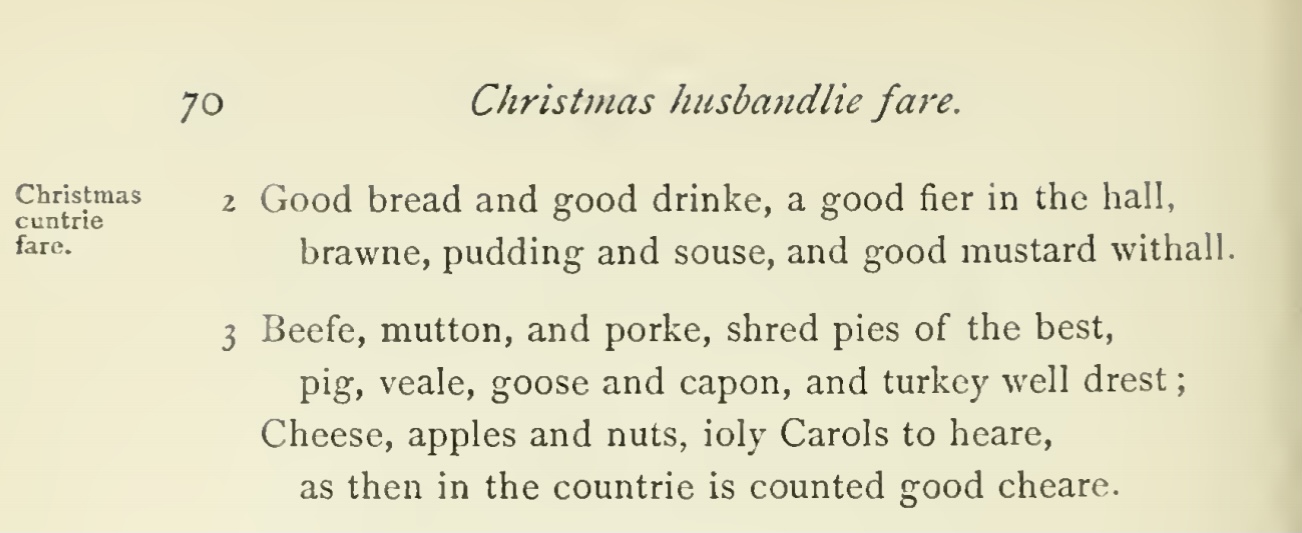
What Did The Puritans Do For Us
We also know of the strong connection because the Puritans disliked them intensely. Possibly because of their connection to big Christmas celebrations, what they considered to be the whiff of catholicism and idolatry or just because of the rich ingredients. They did not however ban them as many people seem to think, or Christmas actually. Even if they had, all laws made by the parliament during this time were overturned in the Restoration so they wouldn’t still be in force now anyway. Remember that, when you read those Christmas articles which tell you that you’re breaking the law for eating one.
That being said, they did try and stamp out a lot of Christmas eating customs and really did equate them with sinfulness as these two poems imply: the first is from Fletcher’s Poems and translations from 1656 entitled Christmas Day and literally describes the ingredients and shape of a mince pie whilst making it sound scandalous:
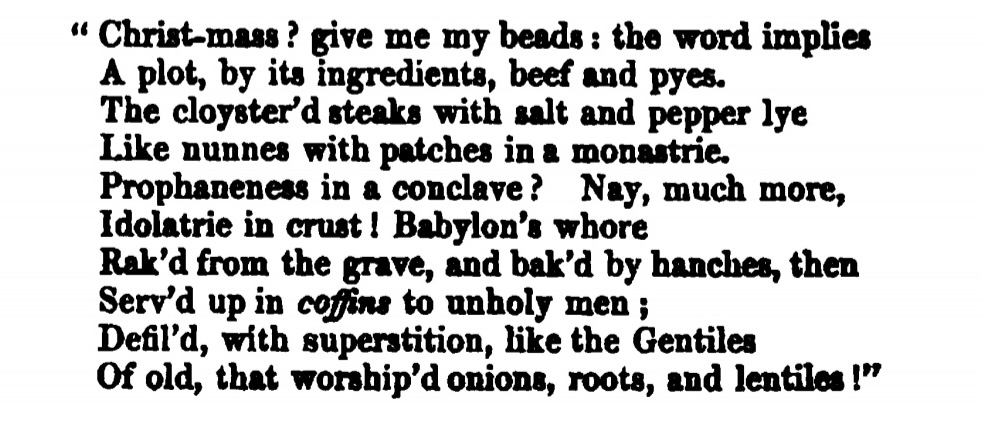
The second is from Nedhams history of the rebellion in 1661

The Puritans were very much made fun of for their dislike though as this rhyme suggests:
‘The high-shoe lords of Cromwell’s making
Were not for dainties—roasting, baking;
The chiefest food they found most good in,
Was rusty bacon and bag-pudding;
Plum-broth was popish, and mince-pie—
O that was flat idolatry!’
Great Pie Survivor
Mince pies however, survived the Commonwealth and Oliver Cromwell; who for all we know was sad he couldn’t eat them. The Quakers however continued with the tradition of not eating them and it was believed at one time to be inappropriate for all protestant church men to eat them. John Wesley refused to eat one in his cell so it was clearly not just an affectation.
Documentary proof that they retained their importance after Charles II’s return can be found in Robert Mays Accomplisht Cook in 1685 where they share the table with amongst other things, a roast swan. They also appear at the table of the Duke of Buckingham, when he was entertaining French King Louis XVIII in 1808 during his exile by Napoleon. They had sadly moved to the second course by then and only got to sit next to a cheesecake and an apricot torte.
Worthy of A Diary Entry
Pepys was also a big fan, they appear many times in his diary. They were made by his wife or at least supervised by her.
Lay pretty long in bed, and then rose, leaving my wife desirous to sleep, having sat up till four this morning seeing her mayds make mince-pies. I to church, where our parson Mills made a good sermon. Then home, and dined well on some good ribbs of beef roasted and mince pies; only my wife, brother, and Barker, and plenty of good wine of my owne, and my heart full of true joy; and thanks to God Almighty for the goodness of my condition at this day.
Samuel Pepys Diary Entry – 25 December 1666
There were also definitely a status symbol during Georgian times with many different styles of cutters and particulars ways of displaying them. These often resembled beautiful knotwork patterns and you had to be able to employ a skilled pastry chef to achieve them.
Its Actually Lucky to Eat Your Weight in Pies
There is not a lot of mince pie lore that I could find sadly, the first one before the reformation is about setting a guard around the pies to prevent them being stolen which does demonstrate their value. The second one is much better and suggests that ‘In every house you eat a mince pie over the 12 days of Christmas you will receive a month’s good luck’ This is obviously going to be difficult this year so I suggest we start a new tradition and amend it to a day’s good luck for every one you eat during the 12 days with extra luck if they are warm or home-made.
That’s it for the folklore/history of the mince pie itself but I’d like to share you a little bit about how the recipe evolved and a couple of other pies that have sadly been lost in the mists of Christmas past.
An Old Favourite or Not Middle English Again
So first we need to visit our old friend the Forme of Curry from 1390, there are a couple of recipes that could definitely claim to be the ancestor of our tasty little delicacy. The first choice for some food historians is what I think is essentially a pork and hard boiled egg pie with ginger :
’Take þer lire of Pork and kerue it al to pecys. and hennes þerwith and do it in a panne and frye it & make a Coffyn as to a pye smale & do þerinne. & do þeruppon zolkes of ayrenn. harde. powdour of gyngur and salt, couere it & fry it in grece. oþer bake it wel and serue it forth.’
Forme of Cury
I think these ‘tartletes’ of finely minced veal, minced boiled egg, prunes, dates, currants, whole spices and sugar might be a contender:
‘Take Veel ysode and grinde it smale. take harde Eyrenn isode and yground & do þerto with prunes hoole. dates. icorue. pynes and Raisouns coraunce. hool spices & powdour. sugur. salt, and make a litell coffyn and do þis fars þerinne. & bake it & serue it forth.’
Forme of Curry
I’ll let you decide.
Finally the Fifteenth Century
There are definitely recipes that come close in two 15th century manuscripts that currently reside in the British Museum, a virtual version is available at archive.org, direct link is in Further Reading below. One sounds almost like it could be a a sort of fruit filled samosa, with minced figs, dates, currants, sugar and spices encased in a type of fatless pastry dough then fried.
I’ll save you the original text, I appreciate that not everyone enjoys the translation puzzle from Middle English. I’m definitely going to try it the next time I can convince myself not to be frightened of my deep fat fryer.
Housewives & Closets
The minc’d pie from the English Housewife by Gervase Markham of 1631 is definitely familiar but requires a whole leg of mutton and a lot less sugar but there are lots of dried fruits and it is suggested that beef or veal could be used.
Then we move to the recipes from The Closet of Sir Kenelme Digby. These are much more recognisable to our modern understanding (and spelling) if you try not to think too hard about the smoked, dried beef tongue (neats tongue). He provides us with two recipes from my Lady Portland and one from my Lady Lusson and this is I think the first time we see mention of alcohol (Sack)being added to the mixture or the pies. There are also apples for the first time but this is still not a mincemeat made in advance of the pie and allowed to mature.
18th & 19th Century Style
The recipe progresses slowly, by 1720 in Kidders receipts of pastry and cookery it has the lemon juice and candied peel as well as more sugar and more booze (Sack again). In 1725 in Court Cookery the meat is now specified as sirloin and it is suggested that you sweeten it to your palate. They are still being served with the first course here. Hannah Glasse in 1760 has added brandy to the sack and the mixture is put away to mature in a crock, suprisingly the meat now appears to be optional although the suet is there.
The sirloin is back for the Duke of Buckingham’s cook in 1806 (the same one who had the French king to dinner) but has disappeared again by the time we get to Mrs Rundell’s New System of Domestic Cookery in 1842. As before, we still have suet plus port but now there are even two additional recipes, one with boiled lemons and one with boiled eggs. Eliza Acton in 1860 has one recipe with meat and one without, but does suggest that the one without would benefit from just a smidge of meat or confusingly some crushed macaroons instead.
The Demise of Meat in Mincemeat
We now have mincemeat, very recognisable to our modern palates even though the question of meat or no meat does continue until well into the 20th century with Jane Grigson and Elizabeth David taking polar opposite positions. The later victorian recipes and early 20th century recipes are definitely familiar and I really fancy trying the Eliza Acton one with the lemons but won’t be adding the suggested meat smidge. I imagine the meat addition probably met its demise with rationing. ‘Should I eat and enjoy this very small steak or should I put it in my mincemeat?’ – is probably not a difficult question to answer.
They Do It Differently in Yorkshire
If you would like to research this yourself please don’t start by researching Yorkshire Christmas Pie. This is not the same, as you will soon come to realise. It appears in Georgian times and Hannah Glasse has a recipe which incorporates a pigeon, within a partridge, within a chicken, within a goose and then finally within a Turkey and then packed in very sturdy pastry because apparently they needed that for travel to London where they were often sent. Inside the pastry was also a hare, woodcocks, wild fowl and more game.
They were huge, a vehicle carrying a Christmas pie of tremendous dimensions broke down in 1832 on the journey from Sheffield to London due to the weight. It was apparently a tribute to Lord Chancellor Brougham and history is sadly silent about whether it ever reached its destination. I secretly imagine it sitting hugely in the tiny house of the carter with his wife asking what she was supposed to do with it.
A Smart, Delicious Historical Alternative
Just before we get to this weeks recipe I’d also like mention the warden pie which appears on several bills of fare for December. This is a spiced pear pie made with pears poached in wine and the spiced syrup is added to the pie, it is also suggested that quinces could replace the pears in this recipe. This would be an excellent special festive pie for those that don’t like dried fruit and is also historic.
Mincemeat
1.5kg
servings45
minutes30
minutesThis version is really fruity and the flavour of the madeira and brandy also shines through. This recipe can be used straight from the freezer and doesn’t require any fiddly jar sterilising. If you don’t drink alcohol or want a vegan recipe see the notes below.
Ingredients
125g raisins
125g currants
125g sultana
125g ready to eat figs, chopped
125g ready to eat dates chopped
175g dark muscavado sugar
75g butter
1tsp ground cinnamon
1tsp freshly ground nutmeg
1 tsp ground cloves
450g peeled, cored and diced cooking apples (this should be the weight after peels and core have been removed)
150ml cider
Grated rind and juice of 1 lemon
2 tblsp golden syrup
2 tblsp brandy
2 tblsp madeira
Directions
- Mix all the dried fruit, sugar, butter, spices and apples in a bowl
- Heat the cider in a large pan until it bubbles around the edge
- Stir in the fruit mixture, lemon rind and juice, and syrup
- Cover and simmer for 20 minutes, stirring occasionally. Remove the lid and continue to simmer until the juice is almost absorbed.
- Remove from heat and allow to cool
- Stir in brandy and madeira
- Freeze in a rigid container for up to six months
Notes
- The alcohol in this is also to make it stay soft enough to be scooped straight from the freezer. If you leave it out you will need to allow the mincemeat some time out of the freezer to defrost before using.
- You can swap the butter for vegan butter in this without any problems
Further Reading
http://medievalcookery.com/search/display.html?booko:58:PIE
https://archive.org/details/tabletalkofjohns00seldiala
http://www.theoldfoodie.com/2007/12/
https://www.pepysdiary.com/diary/1666/12/
https://www.gutenberg.org/files/58809/58809-h/58809-h.htm
https://www.thebookofdays.com/months/dec/25a.htm
http://www.gutenberg.org/files/22790/22790-h/cook1.html
http://www.gutenberg.org/files/22790/22790-h/22790-h.htm
https://archive.org/details/twofifteenthcent00austuoft/page/92/mode/2up?q=pie
http://www.gutenberg.org/cache/epub/8102/pg8102-images.html
The English Housewife – Gervase Markham 1631
The Closet of Sir Kenelme Digby, open’d 1677
E Kidders Receipts of Pastry and Cookery 1720
The art of Cooking Made Plain & Easy – Hannah Glasse 1761
Complete System of Cookery on a Plan Entirely New – John Simpson, 1806
New System of Domestic Cookery – Mrs Rundell 1842
Modern Cookery for Private Families – Eliza Acton 1860
Host and Guest, A Book about Dinners, Wines and Desserts – A V Kirwan, 1864
Featured image credit – Photo by Nicolas Prieto on Unsplash


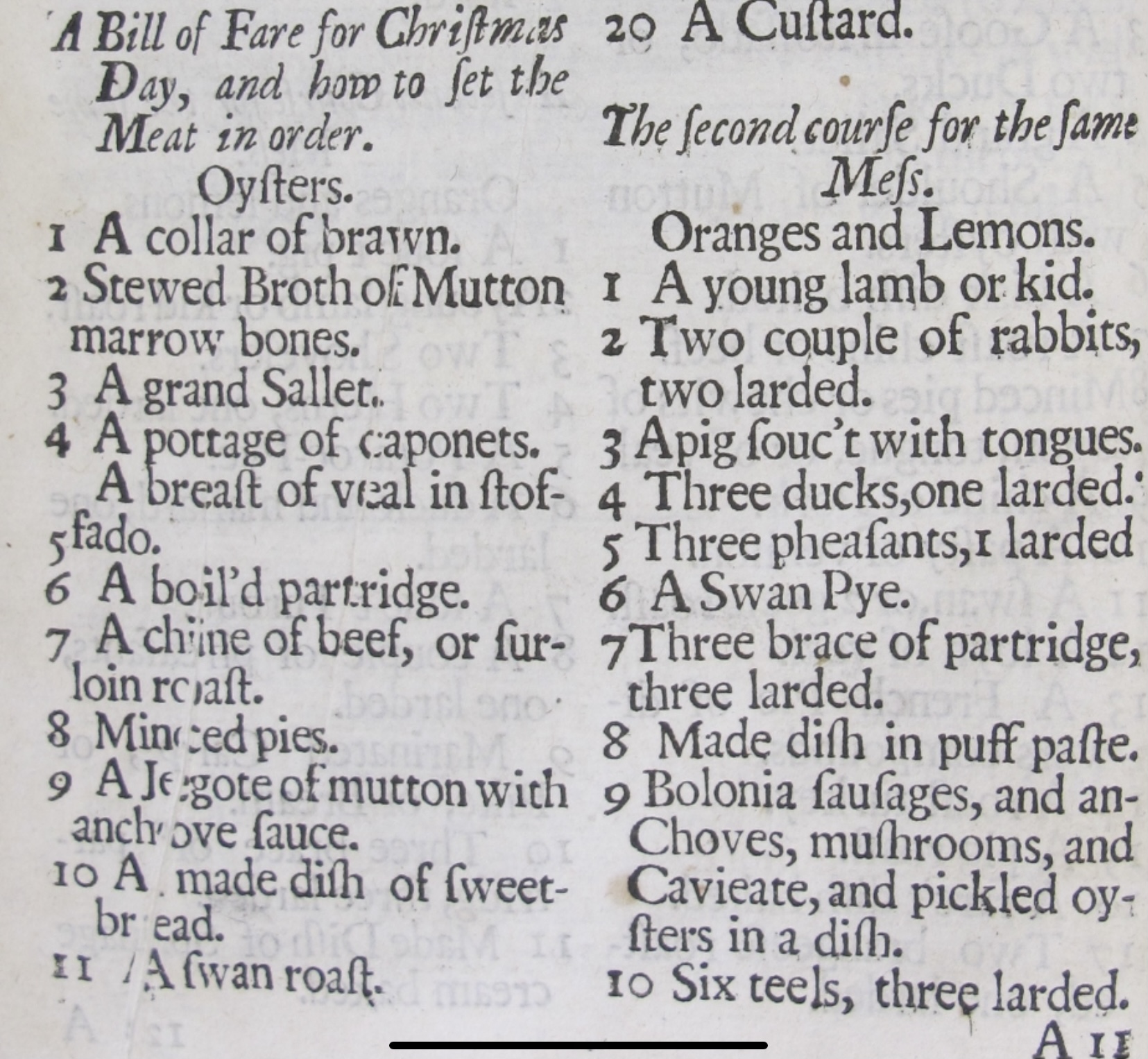
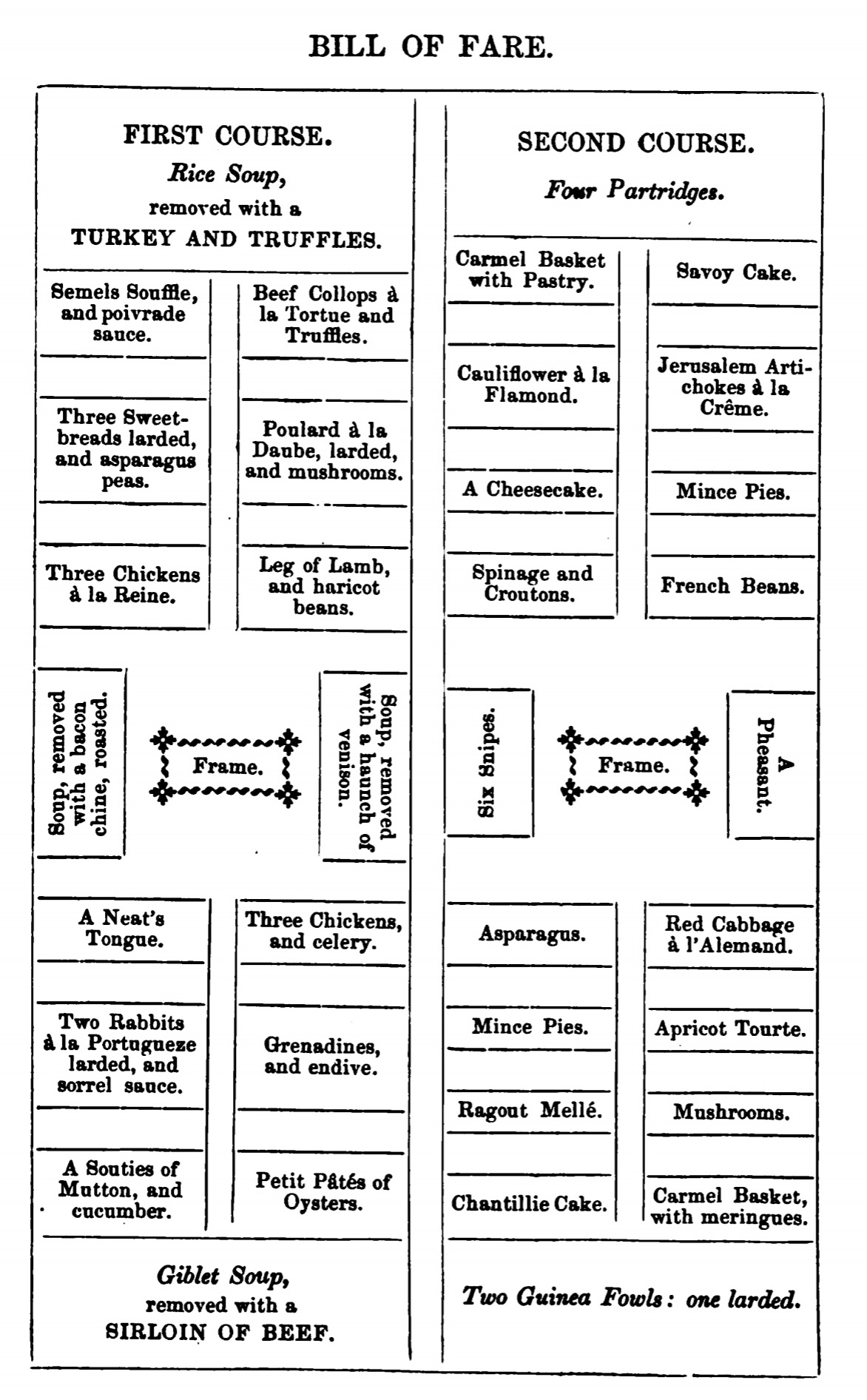
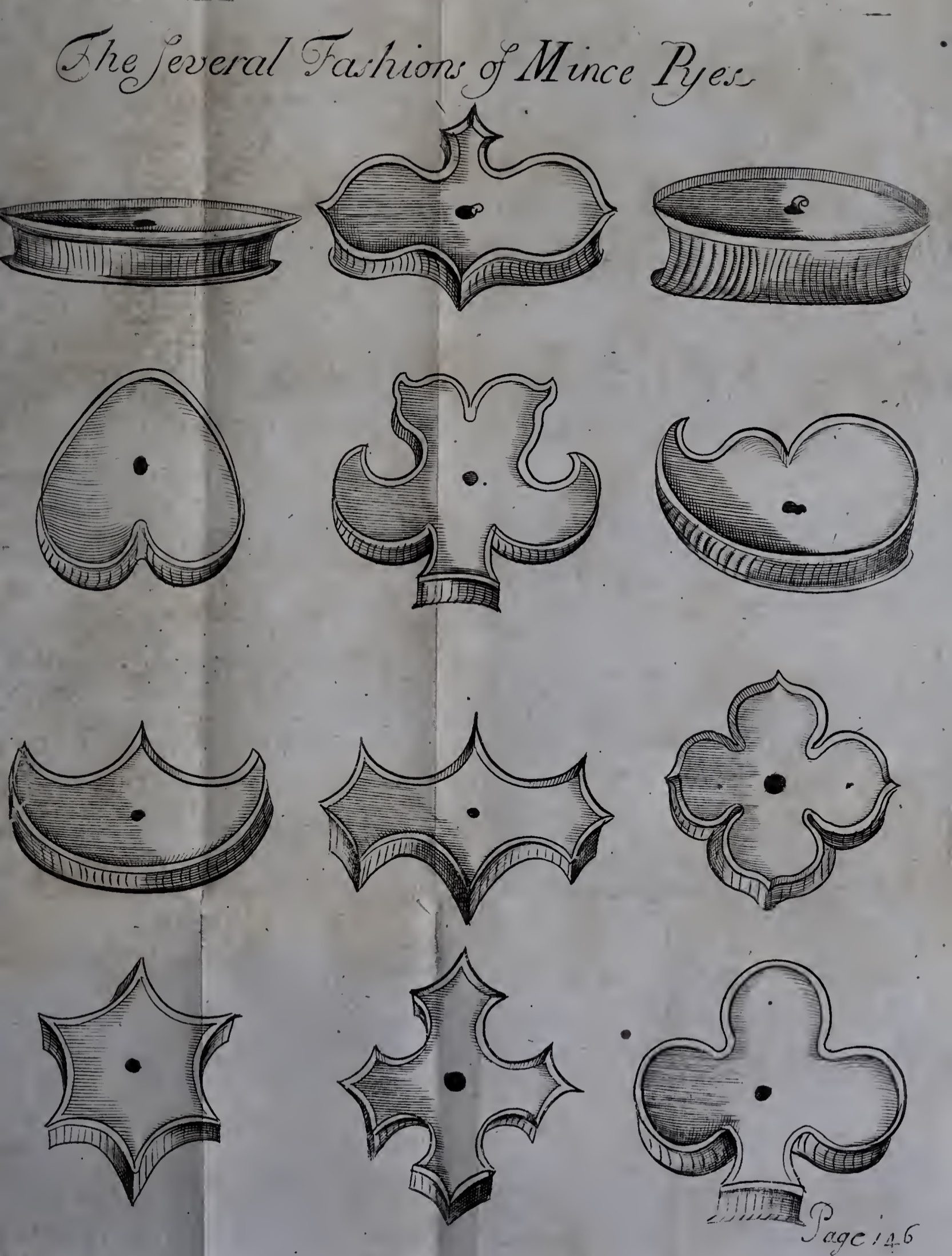

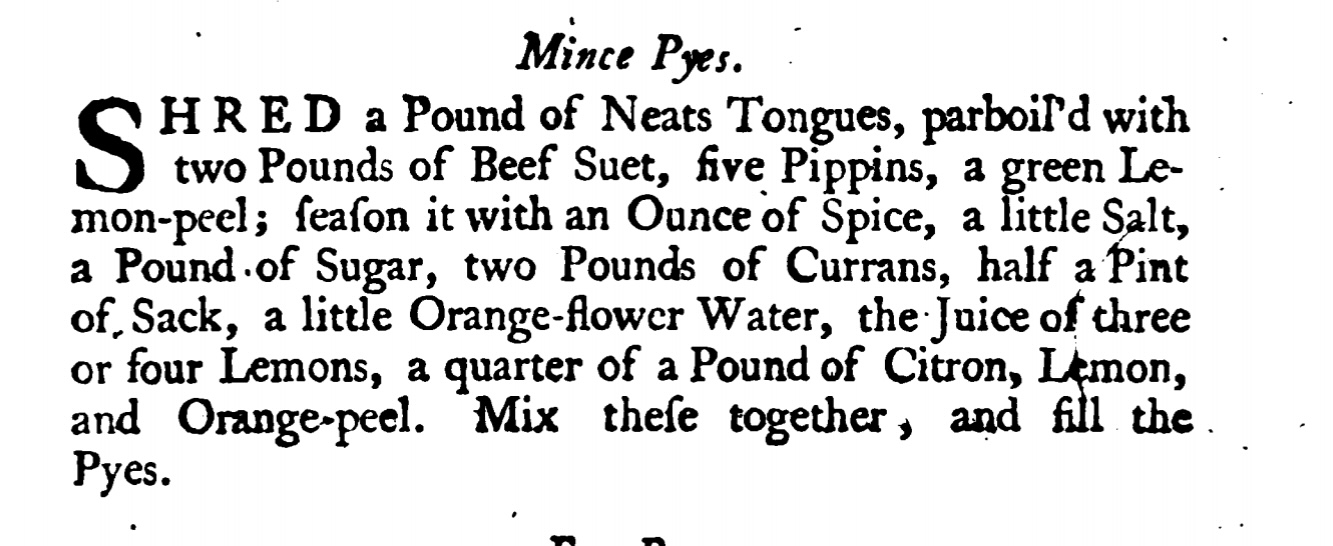


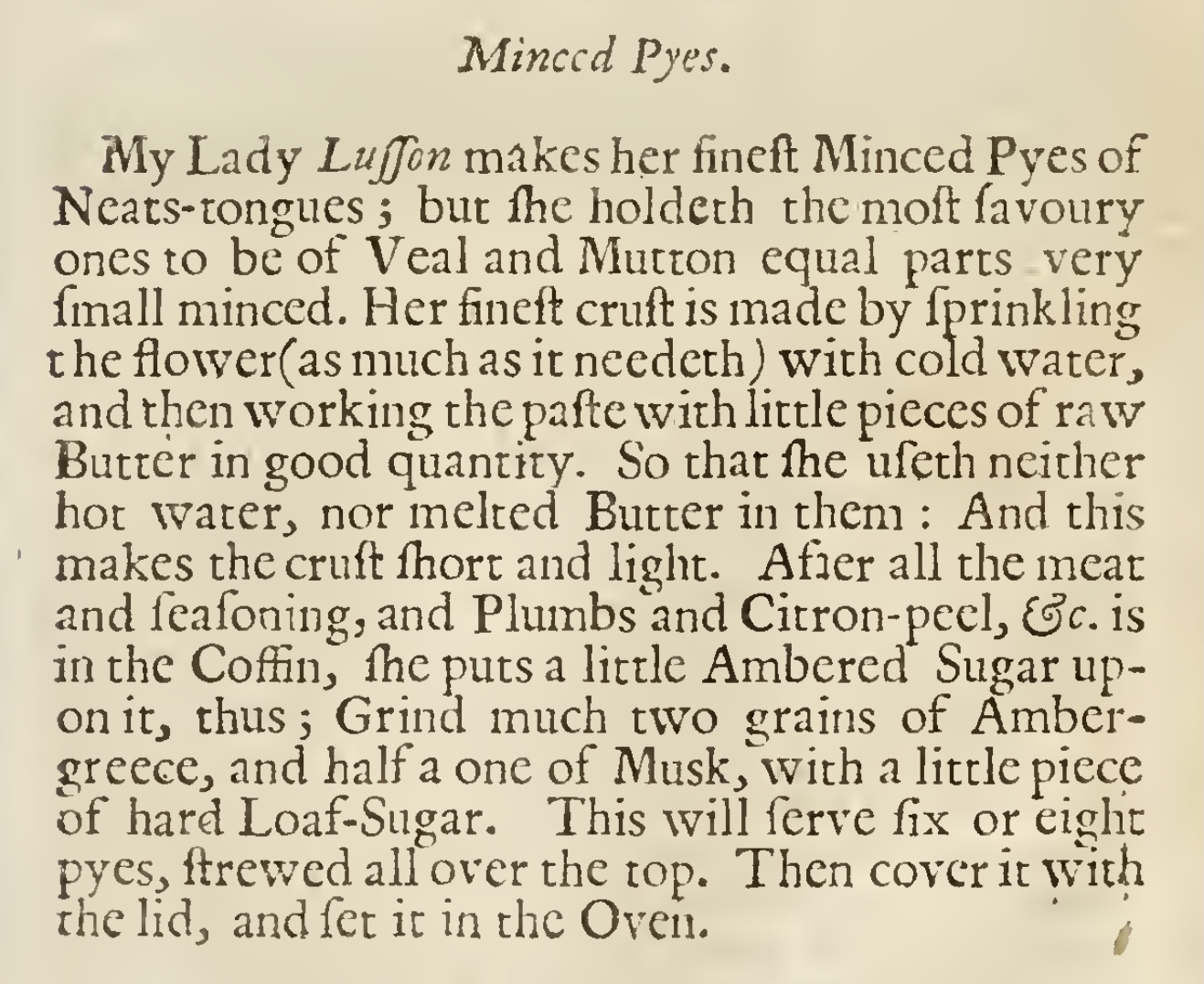
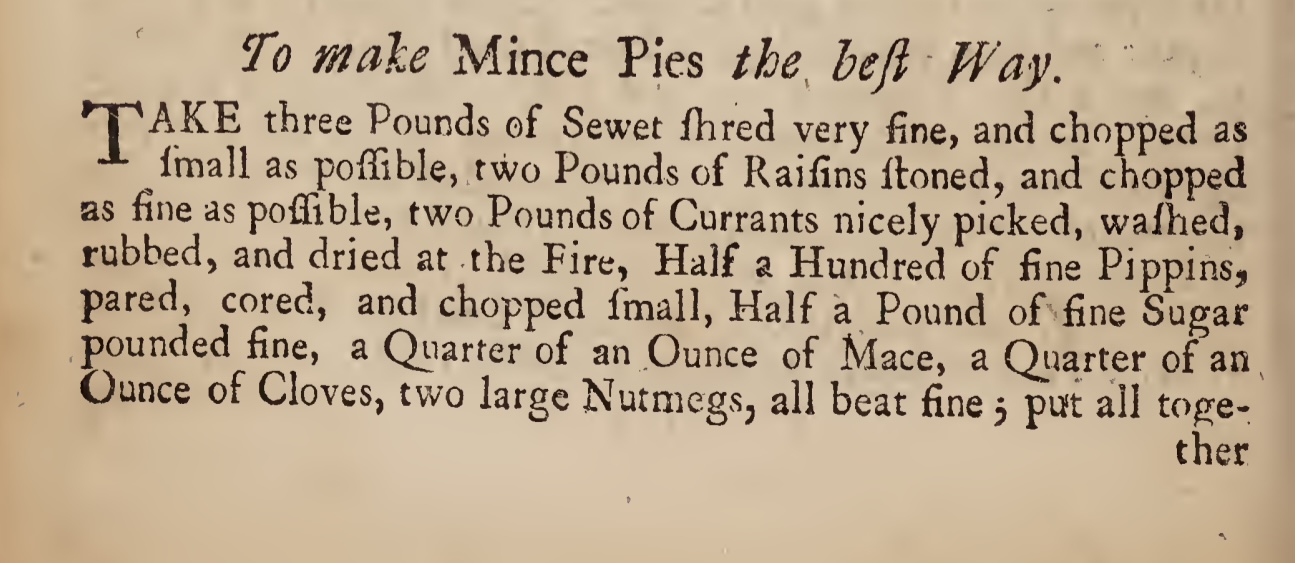
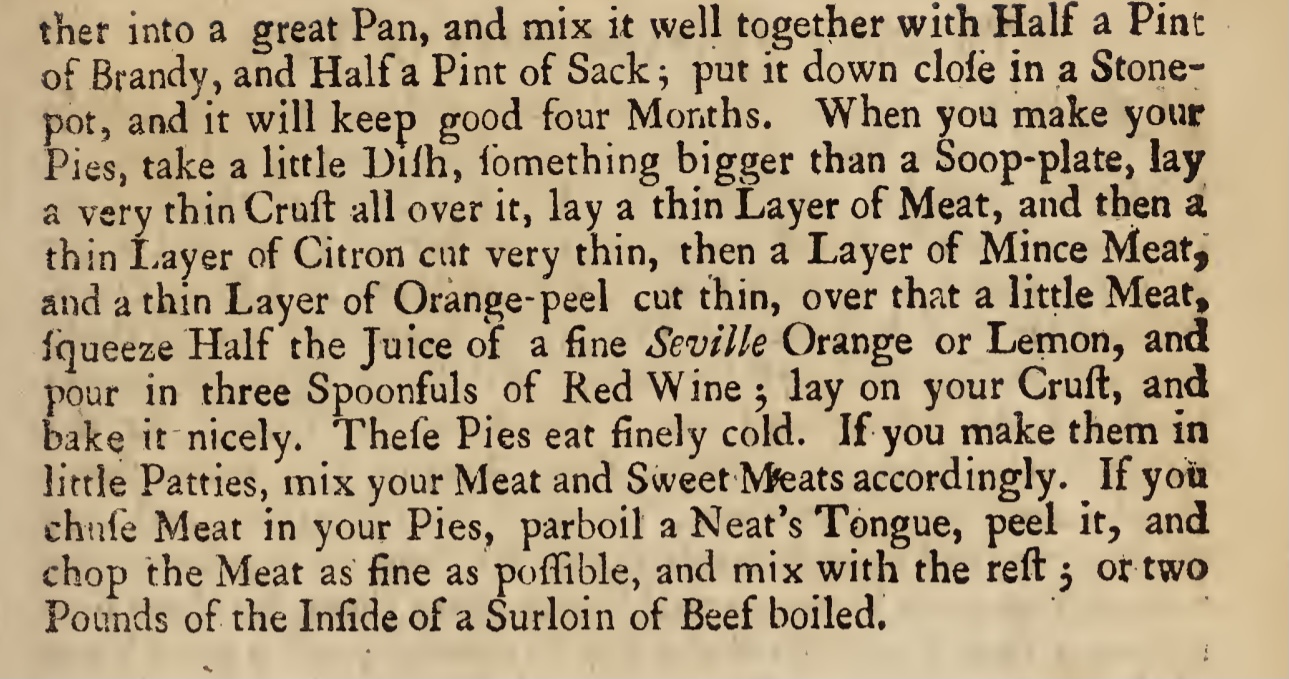


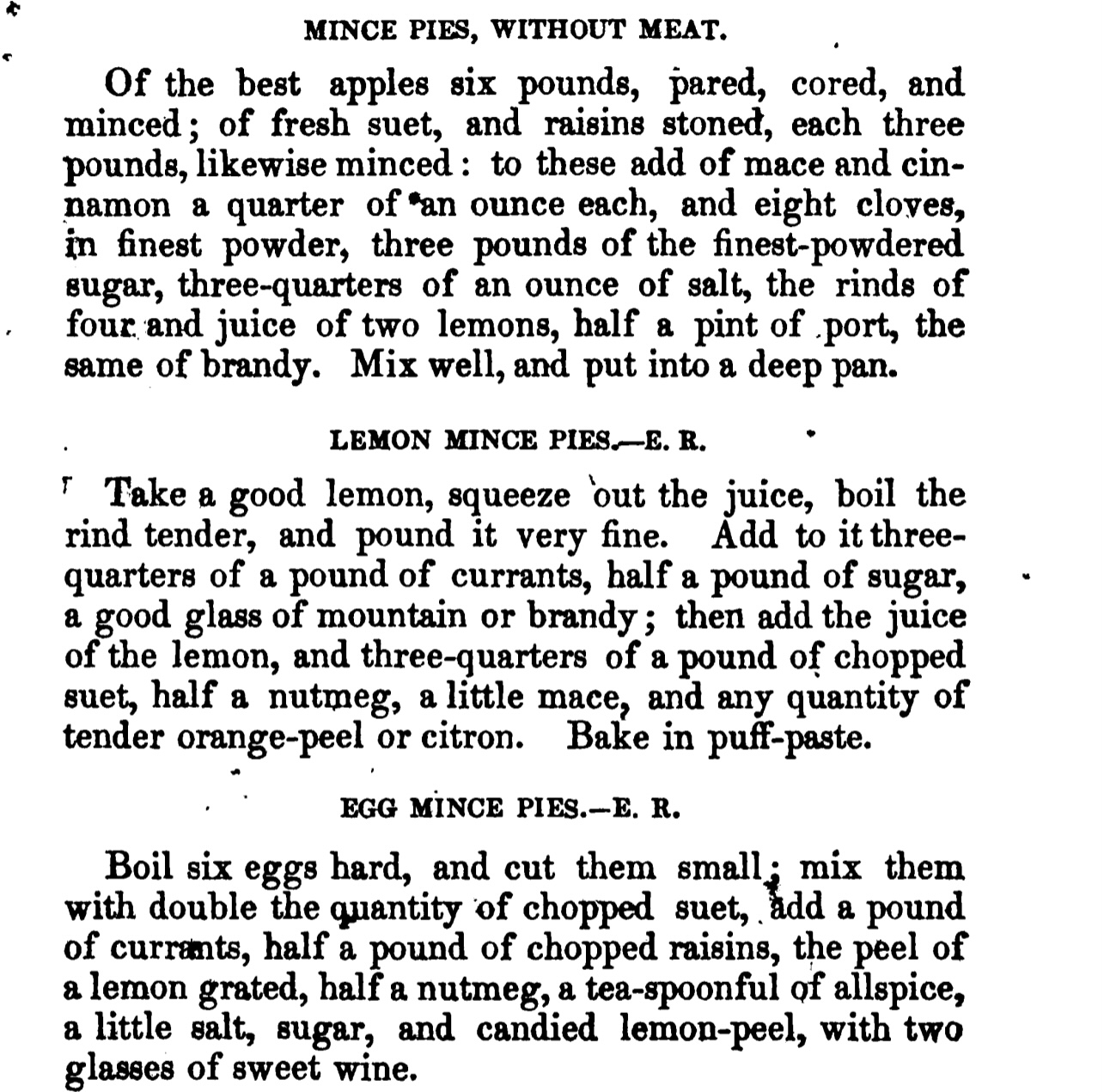
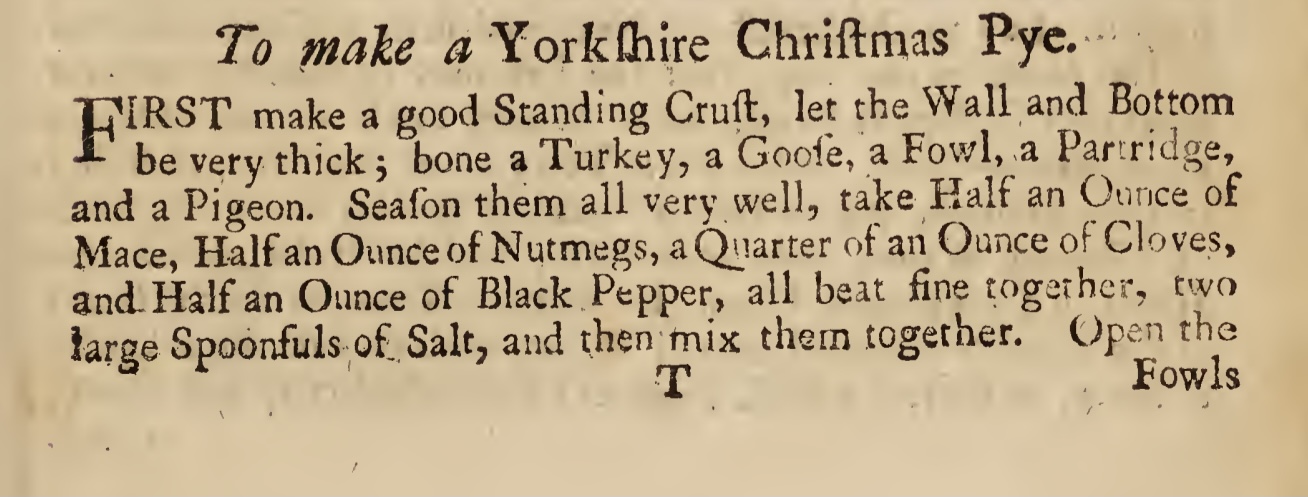
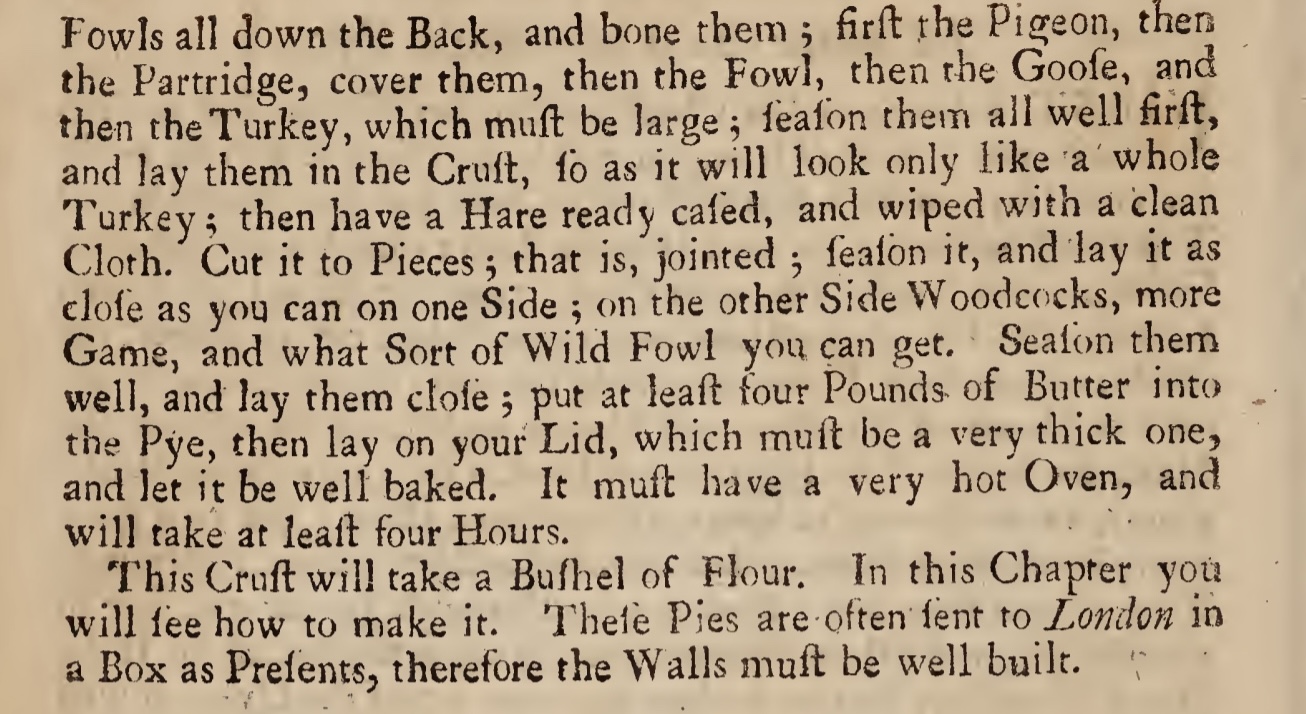
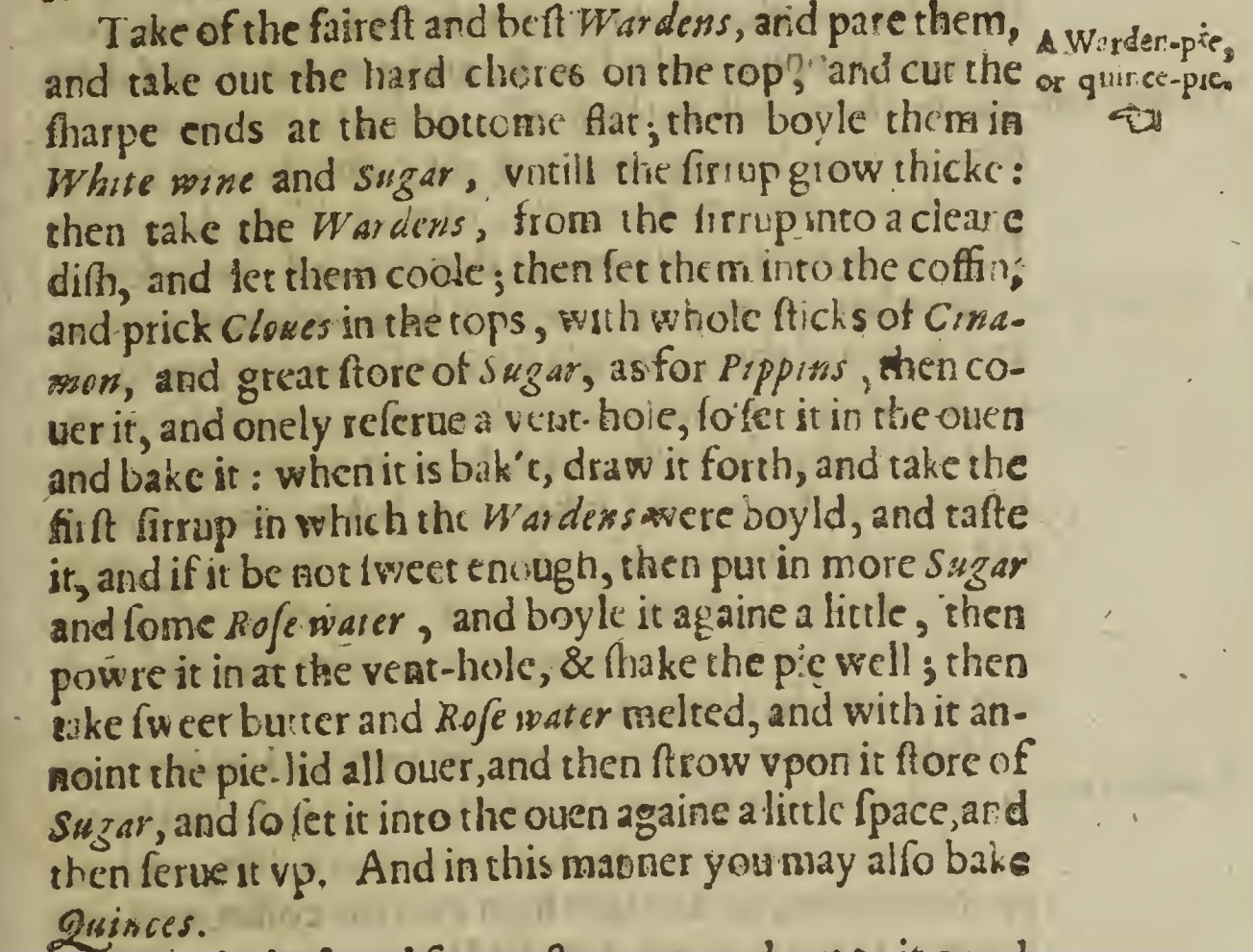
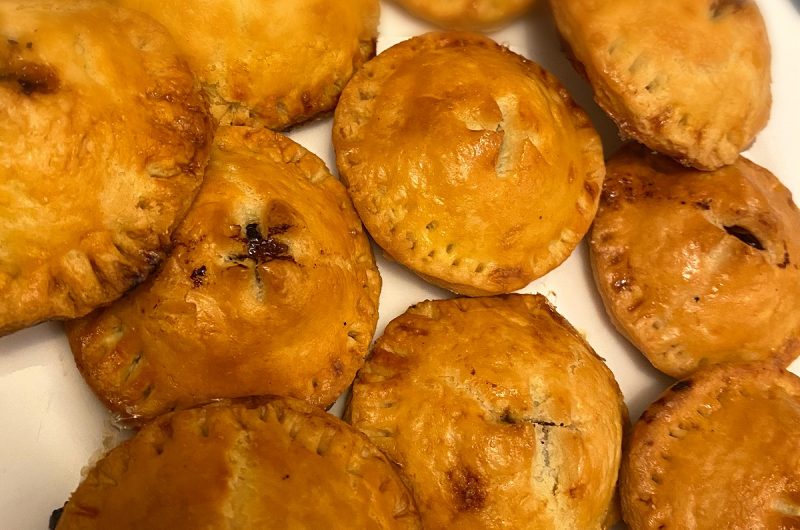
[…] The Cailleach and the Mince Pie Mystery […]